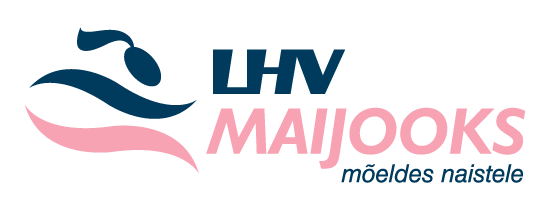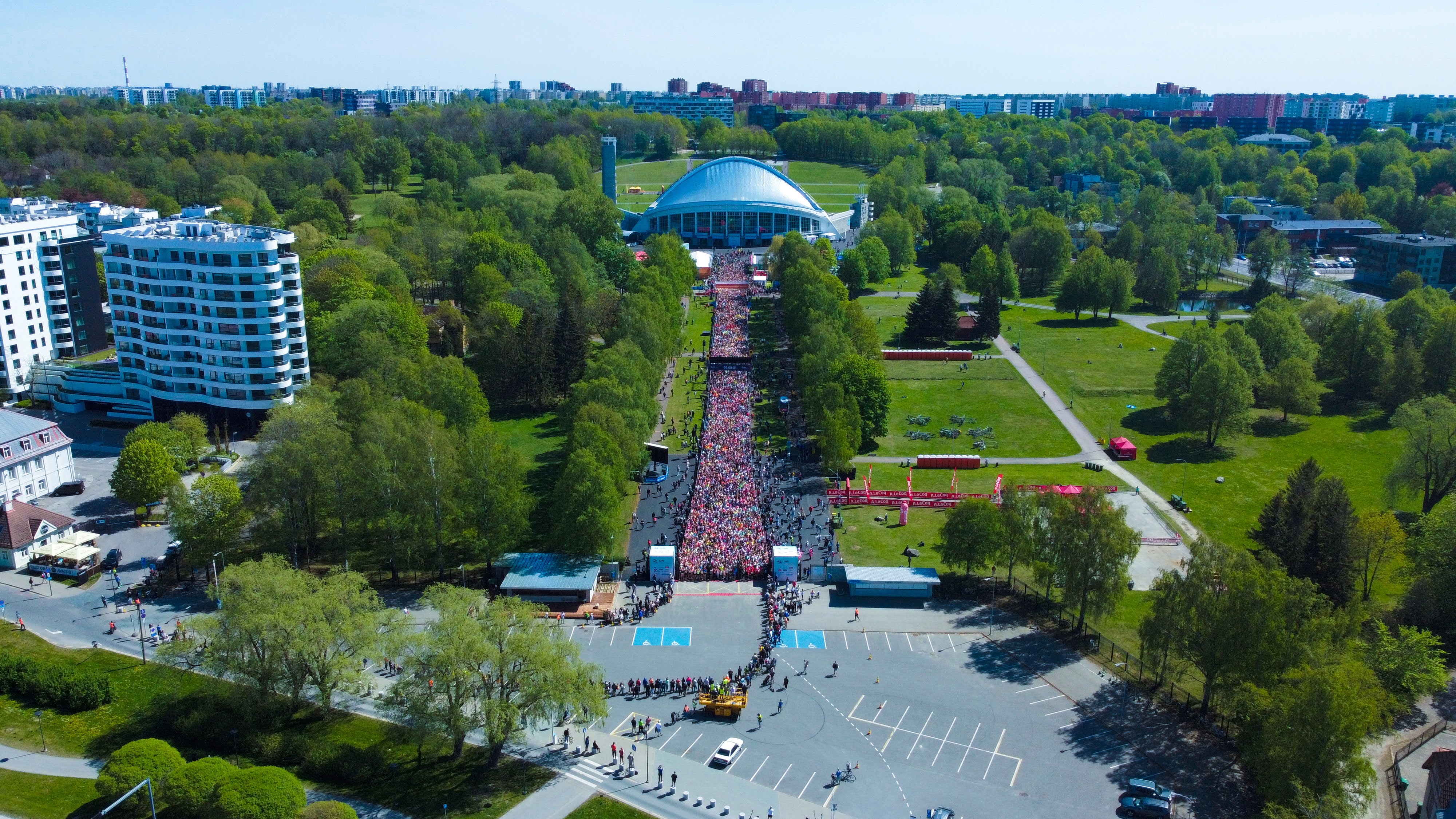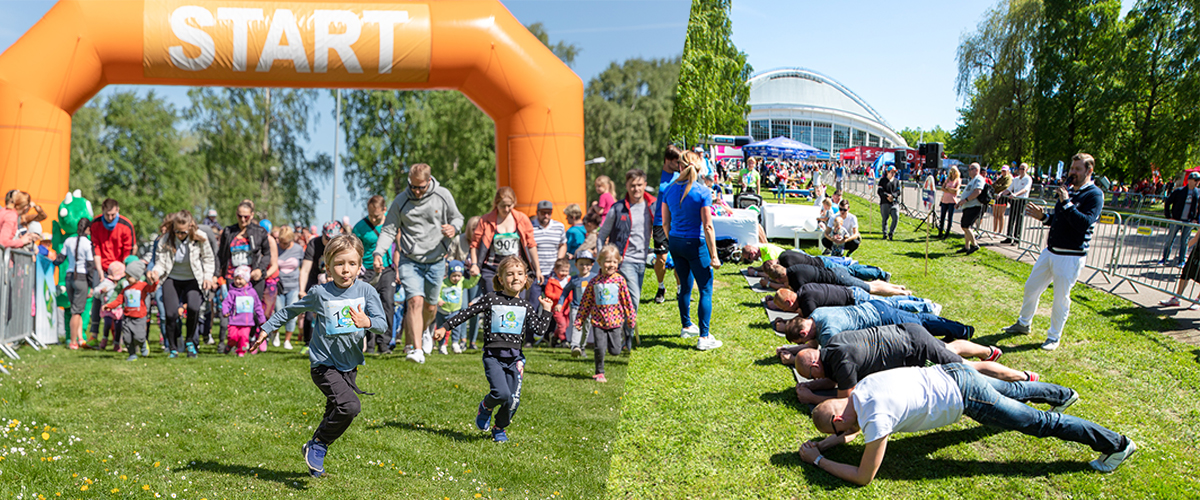About Women's Run
MAIJOOKS GETS THOUSANDS OF ACTIVE WOMEN MOVING!
Maijooks (Women's Run) is the biggest sports event for women in Estonia. The first Maijooks took place in 1988 on the initiative of the Maiklubi club, having lured a couple hundred women into taking part in the run. Today, Women's Run is the largest ever women's health and physical activity event in Estonia, with over a 300 000 women getting involved in sports over the past years. For a small country like Estonia this is a phenomenal number. At times women manage to demonstrate even better results than men.
The Women's Run has played an important role in shaping trends in physical activity among women. The 7 km course is suitable for everyone and can be run or walked at a suitable pace.
The LHV Women's Run welcomes you with entire family, as there is plenty activities for everyone at Tallinn Song Festival Grounds! The Kids' Races will be in the programme, as well as the highly popular area for men that will offer exciting challenges. Health Fair will be also open for visitors. The day will end with the traditional big spring concert.
✨ LHV WOMEN'S RUN TAKES PLACE ON 16. MAY 2026! ✨
Interesting facts
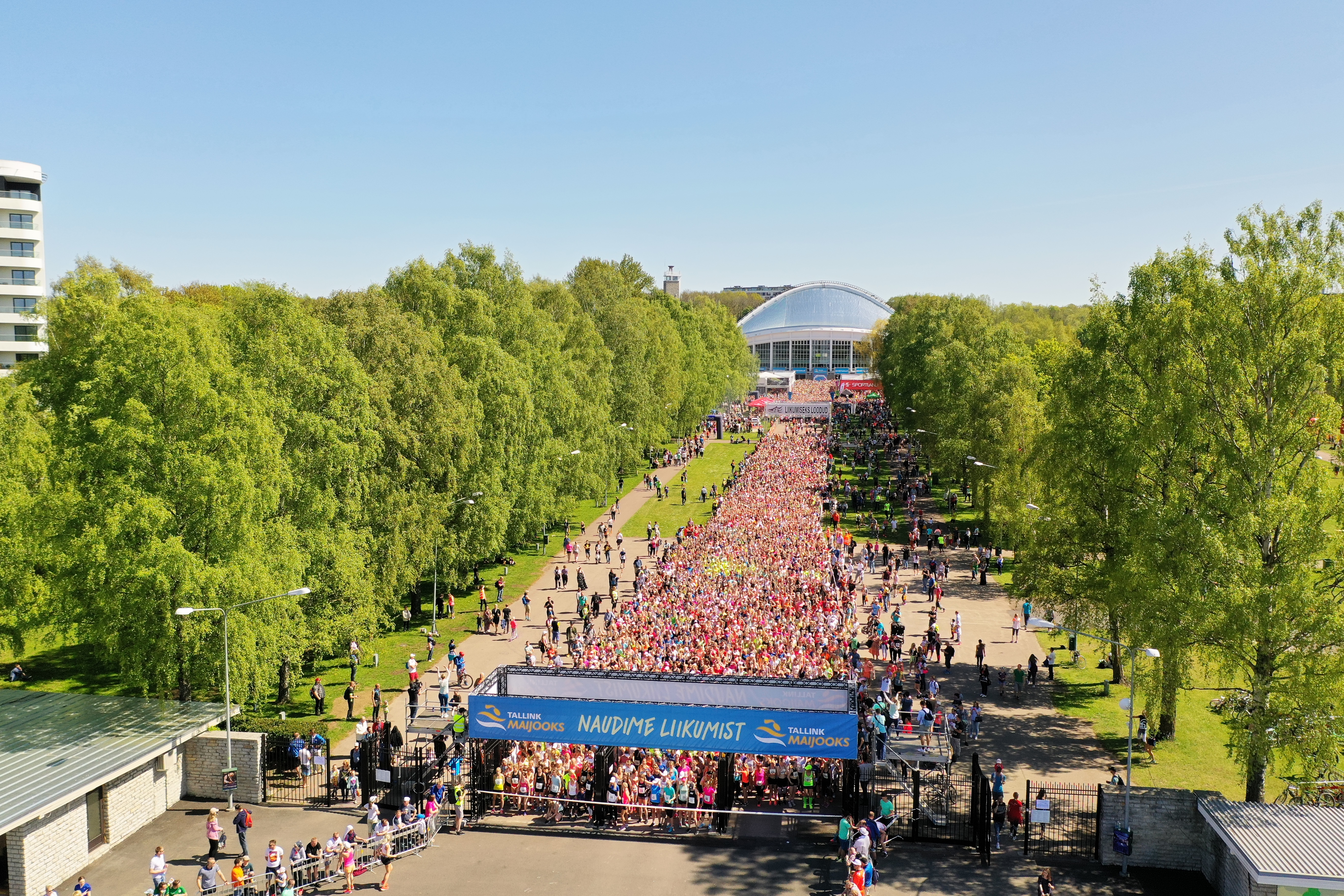
Name and location of Maijooks
Maijooks (May Run) got its name after the time it when takes place – Maijooks is always held in the middle of fresh and fragrant spring in May. Maijooks is always held on a Saturday, with the exception of the first race, which was held on Sunday, 29 May 1988.
Location of the race – Tallinn Song Festival Ground – came along with the name. It is a place by the sea filled with good emotions. It is also a place of great meaning, with sufficient room and air, and it provides excellent options to move towards Maarjamäe and Pirita.
Maijooks course
In the first two years (1988-1989), the race distance was 2 km because running was not very popular among women at the end of the 80s but passing 2 km was achievable for everyone. For the next three years the race distance was 5 km and ever since 1993 the Maijooks track has been 7 km long. Over six years (2004-2009), men also got to participate in Maijooks when a separate 7 km track was open especially for them.
Simultaneously with the women’s race there are kids’ races offering joy to thousands of kids. Record number of kids (3,563) participated in Maijooks in 2019.
Interesting facts:
-
The finishers of the very first Maijooks received a rose and a cup of coffee at the finish line. The cup of coffee was special because in 1988, coffee was hard to come by. The aromatic bean coffee was a symbol of good life and thus the congratulatory cup of coffee at the finish was a prestigious gesture by the organisers. The first Maijooks was commenced by the fashion show of the famous Estonian clothes manufacturer Marat to show the audience that sports clothes do not make women look manly.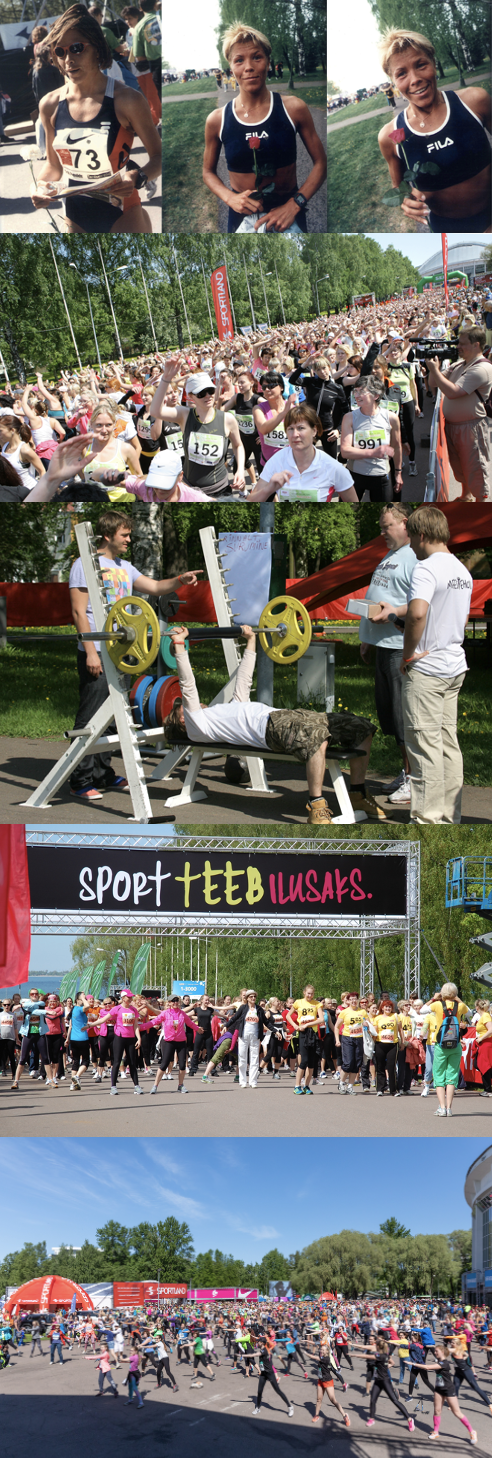
- By 1990, i.e. with just 3 years, the participant number of Maijooks had grown by more than tenfold with 3,000 runners at the starting line. For the first time, the participants were offered food after the race – Tallinn airport sponsored the event with 3,000 airplane meals. Olympic winner Ants Antson gave all the finishers a rose.In 1991, the finishers were greeted by the popular singers Ivo Linna and Mikko Alatalo.
- By 1992, the participant number had grown to 5,500. After the race, people got to enjoy a show by the comedians Margus Lepa and Raimo Aas, and those bold enough had the chance to take a hot air balloon ride above the Song Festival Ground.
- In 1993, the participant number dropped for the first time. The reason was that due to the tumultuous times surrounding the currency change, the public transportation tickets and petrol prices had increased so much that people from further locations did not come. At the same time, the women’s race had become so popular that three men dressed up in traditional women’s folk clothes were caught at the starting line.
- In 1994 it rained for the first time in the history of Maijooks. In the previous years, the participants had always enjoyed clear skies and warm sun after the race while sitting on the grass eating and listening to the concert.
- At the eighth Maijooks (1995) a separate start group for faster runners was organised for the first time. There were ca four hundred fast runners and the first one hundred of them received a diploma from the International Olympic Committee. Folk band Untsakad performed at the concert following the race.
- In 1996, the Maijooks race was timed for the first time – using a stopwatch and a pencil. Only about a hundred participants were brave enough to sign up for the timed event. For the first time, the runners at the timed race received numbered bibs. Ille Kukk was the winner of the first timed race with time 26.44.
- At the 10th anniversary event the race was kicked off with fireworks.
- In 1998, the race was organised under the Olympic flag and was a part of the International Olympic Committee’s event “Sports for Everyone”. The Olympic flag waved at the Song Festival Ground tower and each finisher received a diploma signed by the president of the Estonian Olympic Committee Tiit Nuudi. For the first time, Jane Salumäe started at Maijooks and won the race by landslide with time 22.50.
- In 1999, each finisher also received a 115-page booklet titled A Sportsman’s Journal which included, in addition to training advice, also a training journal to inspire the race participants to remain active all year.
- The Maijooks of 2003 was part of the Estonian European movement campaign. The women’s race was finished by the grand concert titled Yes to the European union! In collaboration with Eesti Post, a special Maijooks postcard and stamp were made to commemorate the 16th Maijooks. Everyone who wished got to purchase the postcard on site and mail it away with the Maijooks stamp.
- In 2004, the event was renamed – SEB Ühispanga Maijooks. SEB bank was the title sponsor of Maijooks for 13 years. For the first time, men also got to participate in Maijooks when a 7 km men’s distance was included in the event.
- In 2005, registration moved online. Dealing with coupons was becoming a thing of the past.
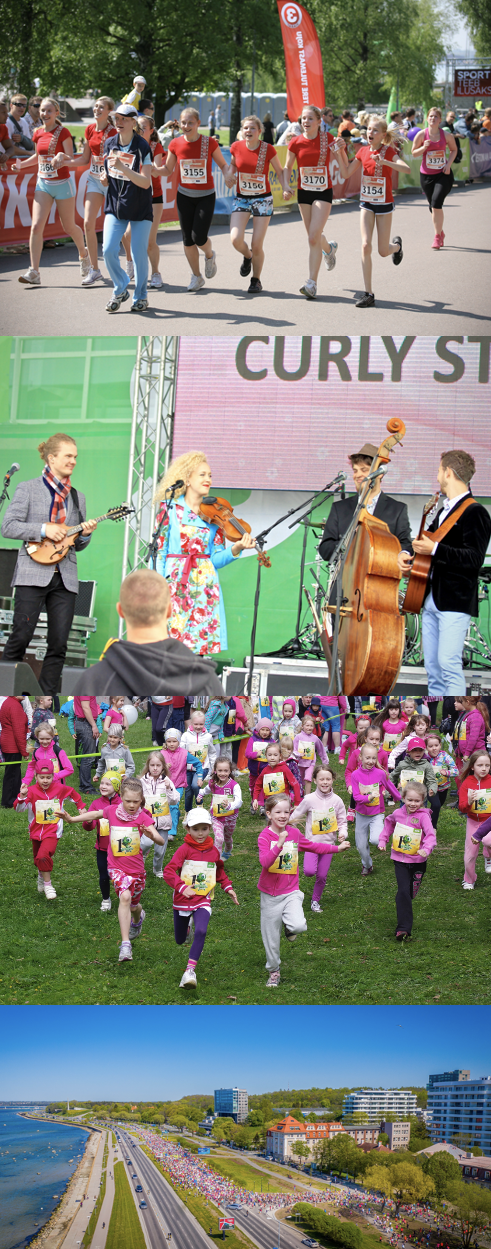
- In 2006, Maijooks had electronic timing for the first time. After-race concert was headlined by the Estonian Eurovision song contest winner Dave Benton. This is how Dave described his Maijooks experience: “It is simply fantastic. I just came to perform, but what I found was amazing! Truly fantastic!”
- In 2007, the Maijooks course led the runners through Maarjamäe up the klint shore to Lasnamäe and for the first time the runners returned to the Song Festival Ground via the Mäe gate located on top of the hill. To ensure safety, the track zigzagged down the hill and the runners finished in front of the stage area. At the finish, the participants were greeted by folk band Kukerpillid and singer Erich Krieger, whose song “Naised on hullud” (Women are Crazy) has become the unofficial anthem for the event. The 20th anniversary event ended with cake eating at the cake tent. 97,378 runners-walkers had participated in Maijooks over 20 years.
- In 2008, for the first time, the train operator Edelaraudtee offered free rides to Maijooks participants across Estonia.
- In 2009, the immensely popular Day Care for Men was opened for the first time, where people got to partake in basketball competitions, kick penalties, play football, enjoy a hot tub sauna, have a haircut and do much more.
- In 2009, Estonian Air flew one Maijooks participant to Berlin or Amsterdam. All participants were included in the prize drawing.
- In 2011 the starting pistol was shot by the Olympic winner Gerd Kanter.
- In 2012, the number of organisation team members exceeded 250 for the first time.
- In 2014 the participant record with 16,299 participants was made. In the same year, the title of the company with the most participants was for the third time won by Ericsson Eesti who had more than 1,200 employees participating in Maijooks.
- In 2015, in honour of the music year the finishers were greeted by the Police and Boarder Guard orchestra.
- In 2016, the race pistol was shot by the Estonian strongest man, the best male athlete of 2015 – weightlifter Mart Seim.
- In 2017, to commemorate the anniversary, all finishers received a Maijooks medal for the first time. At the jubilee concert the unofficial anthem “Naised on hullud” (Women are Crazy) was performed once again. Along with the band Bombillaz, Karolin Lill who was the inspiration for the first Maijooks 30 years ago also took the stage.
- In 2018, the book Maijooks 30 by Anne Lill was published. The book gives a comprehensive overview of the twists and turns in the early years of the current major event and of memorable events over the 30 years. In 2018, the starting pistol was shot by Estonia’s Young Athlete of the Year Kelly Sildaru. The most popular name among the runners was Katrin – 190. There were 17 participants named Mai.
- In 2019, the Maijooks starting signal was given by Tallink ship captain Rein Õnnis using the Tallink ship foghorn. The race day was ended with a concert by Ott Lepland.
- In 2020, Maijooks was held virtually for the first time.
- The oldest participant was 92-year-old Leida (2005), the youngest was just a few weeks old and passed the course in the stroller.
- In 2023, a record number of countries took part in the Women's Run, with 22 countries represented.
- In 2024, the starting pistol was shot by popular Estonian journalist, singer and songwriter Reet Linna.
- In 2025, a new record was set for the number of participating countries, with runners coming from as many as 31 different nations. The list included countries from all around the world — Australia, Canada, India, South Africa, Mexico, Turkey, Azerbaijan, Norway, and many others.
